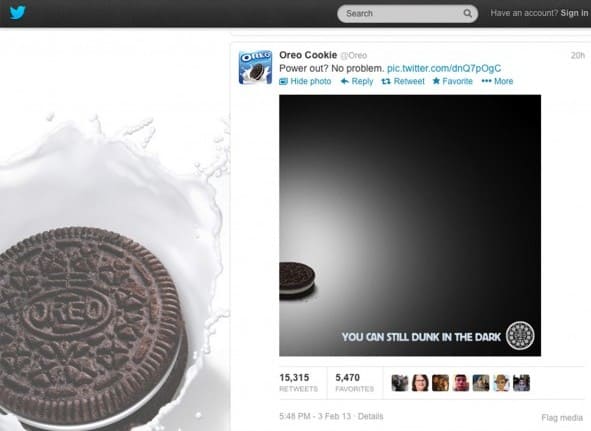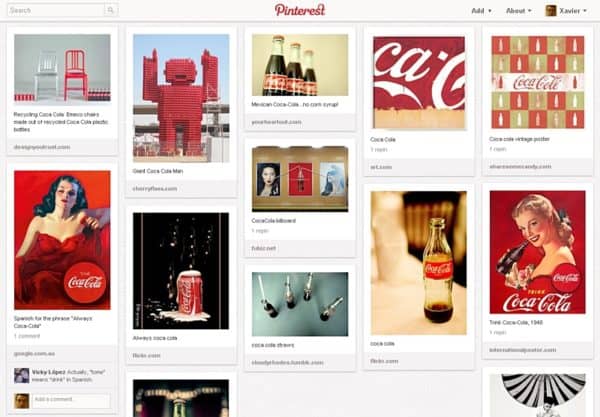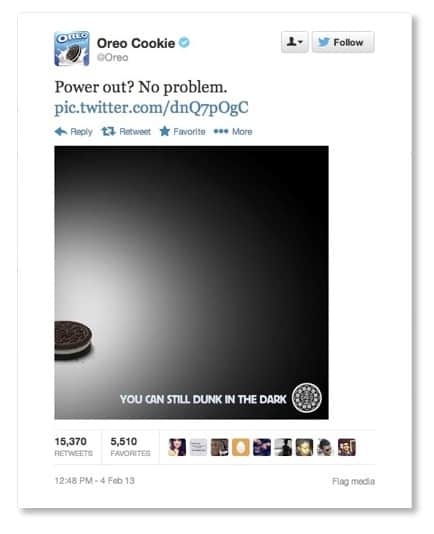Brands Ignore Facebook, Twitter and Pinterest at their Peril, says Vision Critical Study


With the rise of social media, reaching a specific market segment has never been more cost-effective. And never has it been more complicated.
But a comprehensive new study from Vancouver-based market research firm Vision Critical reveals that social media is, in fact, having a big impact on consumer decisions.
Market research exists in an unbalanced state these days. Coca-Cola, after declaring that social media had no effect on sales, quickly retracted, affirming that social media was “crucial” to driving in-store sales. Canon has reacted to the trend towards “showrooming” by opening stores that are actually showrooms, in which merchandise can’t be purchased but can be pawed by the public. And recent statistics have openly questioned whether anyone really knows how to use the vast streams of Big Data now available to marketers.
The point is that we’re in a new era, in which marketers who can meaningfully interpret the data available to them and act on it in a way that converts stand to benefit both themselves and their clients in a meaningful, quantifiable way.
Vision Critical has been at the forefront of studying the new challenges posed by social media to brands. The firm has just released a whitepaper, the results of which are drawn from almost 6,000 respondents in Canada, the United States and the UK over a 17-month period, focusing on the three main platforms seen by marketers as influencers: Twitter, Facebook and Pinterest. An article by Vision Critical focusing on Pinterest’s relation to consumer behaviour will be in the July/August issue of Harvard Business Review.
To what extent can consumer behaviour on social media relating to specific brands or products drive either in-store or online purchases? Even though concepts of Big Data and social media have been with us for a nearly a decade now, their importance has become apparent on a widespread basis only during the last year. Marketers who resist the new paradigm are in for a rude surprise.
38% of people who have liked, shared or commented on a product on Facebook have gone on to buy the product. And 43% of people who have favourited or shared a product on any social media platform ultimately purchased it.
Key findings of the Vision Critical report are that social media drives both in-store and online purchases in almost equal numbers. 38% of people who have liked, shared or commented on a product on Facebook have gone on to buy the product. And 43% of people who have favourited or shared a product on any social media platform ultimately purchased it. Facebook is still king in terms of volume, with 75% of respondents logging in daily, compared with 17% for Twitter and Pinterest.
A sub-textual finding in the report is that the marketer who doesn’t view new trends mainly as a threat will be well positioned to adapt to the new environment. The better approach is to use the tools now available via Big Data and social media and adapt your enterprise to better respond to consumers.
“’Showrooming’, whereby shoppers use stores to see merchandise in person before buying online is viewed as a huge threat to retailing,” write Alexandra Samuel, Vice President of Social Media and David Sevitt, Vice President of Consumer Insight at Vision Critical, in the Harvard Business Review article. “While 26 percent of consumers engage regularly in ‘showrooming’, 41 percent browse online and then purchase in stores — a practice we call ‘reverse showrooming’. Instead of feeling threatened by ‘showrooming’, retailers should study their customers’ paths to purchase and use the insights gained to hone their online marketing efforts.”
I caught up with Samuel and asked her to elaborate on these findings.
“Ask yourself,” she replied. “What information could we embed in shareable images about our products, so that when they get pinned onto Pinterest, people find out about the features that matter to them — whether it’s the fact that your t-shirt is sweatshop-free, or your netbook weighs less than 2 pounds, or that your toy car is safe for toddlers. Finding the key drivers for your product category, in the network that drives the maximum of your customers to the store, is the best way for retailers to get customers from social to store.”
What differentiates social media from broadcasting and mass media is its fragmented nature. Members of online communities are not homogenous couch potatoes, but instead seek each other out and have online conversations based on mutual interests. For the marketer, targeting value-rich consumers involves more effort but is worthwhile compared with the old buckshot mono-message approach. Think of these communities as neighbourhoods in a city. You want to know not only which neighbourhood is worth leafleting, and which neighbourhoods aren’t worth your time, but also which buildings and which apartments. Investing the time in researching at a more or less granular level is what the Vision Critical report refers to as table stakes.

Where marketers used to consider a conversion rate of 3.5 per 1,000 targeted consumers by means of old media a pretty good ratio, targeted social media campaigning is aiming for something closer to 500. Online, a 1% clickthrough rate used to be portrayed as good enough. It’s now rightly portrayed as a 99% waste of marketing resources. Pioneers such as Amazon and Netflix have broken ground with their recommendation algorithms. Those algorithms are only getting better and more precise as the sheer quantity of data increases and astute marketers study consumer behaviours.
So what kind of advice would Samuel provide to marketers, other than “don’t panic’?
“Don’t try to tackle the whole social media universe at once: choose the network or category where you think you can drive social purchasing, and then use a combination of analytics and survey data to measure progress,” she says. “If you’re trying to strengthen social as a way of getting customers to make online or in-store purchases, your best bet is to start by focusing on the one or two most promising networks and customer segments, and then develop a strategy aimed at that particular network and audience. For example, the most common category of sharing-to-shopping on Twitter is in electronics. Since we know that A LOT of Twitter-related purchases are actually made on mobile, you’ll want to have a shopping cart/checkout system that makes it very easy for people to complete a purchase on mobile. Since a third of those purchasers also say that Twitter influenced their purchase by alerting them to a sale or deal, consider tweeting out deals that are targeted at people who are mentioning your product.”
The ability to discern how the platforms differ from each other, the “tribes” who congregate on those platforms, and their relative behaviours around sharing or lurking is only the beginning of interpreting ever more granular data for the purpose of converting a sale. It is no longer adequate to think in terms of demographics. On social media, categories such as “women” or “teenagers” or “18-to-34-year-olds” serve merely as buckets for containing ever more specific descriptors, such as “18-to-34-year-old women with a keen interest in gardening who log in to Pinterest X times per day using a mobile device”. What’s their income? Do they live in the same town as their parents? Do they have children? It’s important to know in which context this information is important, and when you can safely ignore it.
None of this has to be creepy. Getting a birthday greeting from a retailer that gives its reader the creeps is a study in poor execution. A marketer who studies behaviours and executes appropriately will stand a better chance at eliciting a response that’s more like getting a birthday message from a friend.
In broad strokes, we can break consumers down into “sharers” and “lurkers”. 65% of Facebook users post less than 5 times a week. These are the lurkers. Crafting a strategy that attracts both lurkers and sharers is a challenge. You might focus on one, but to create a message that primarily excites highly engaged social media users may not be enough. Is someone more or less likely to make a purchase based on a personal recommendation? Or are they more driven to research a product before they buy? That may depend on which platform they’re using. The different platforms attract people with different approaches in variable quantities at different moments in their decision-making process.
How people act during these moments can influence how a marketer places information for amateur sleuths to find, where and when to place promotions or coupons, whether to nudge someone towards an online or in-store purchase, and what messaging converts better when recommended by a friend or through a company’s official social media platform.
You also need to consider the “three tribes” of social media purchasers: thinkers, questers and leapers. Thinkers have been contemplating making a purchase but have not researched it. Questers do a lot of research. And leapers are prone to impulse. Like an anthropologist studying a mysterious tribe, you can intuit a lot from the online behaviour of the various social consumers. There is a fourth tribe called the “victors” who celebrate the spoils of their purchases, displaying the evidence of their “victory” on their preferred social media platform. Am I beginning to sound like the narrator of a wildlife documentary?
None of this has to be creepy. Getting a birthday greeting from a retailer that gives its reader the creeps is a study in poor execution. A marketer who studies behaviours and executes appropriately will stand a better chance at eliciting a response that’s more like getting a birthday message from a friend.
Even a product as widely appreciated as bacon can benefit from a well-placed social media campaign. But if your product is more niche, which seems likely, the questions answered in Vision Critical’s social media whitepaper provide at least the framework for the kinds of questions you should be asking about how you engage your public. For example, Pinterest users skew towards fashion, DIY projects, food and drinks. 47% of Pinterest users surveyed say they just “happened upon” an item they pinned and then bought. The number goes up to 67% for a food or drink item and down to 17% for a tech purchase. Twitter users, on the other hand, are far more likely to purchase tech items that they’ve shared on that platform. 34% of Twitter purchases and 25% of Facebook purchases were made after favouriting or sharing a tech item. Product categories matter in relation to platform.

It helps to parse out who is using social media and how. Gold prospectors in the Yukon used to swirl black sand in their pan for days and days, squinting for a tiny flash of gold. Converting the undecided or impulse buyer may seem similarly challenging. Determining the best timing for putting a discount code or promotion in front of a particular customer of a particular tribe on a particular platform is obviously the golden centre of a highly volatile Venn diagram that any marketer would count themselves lucky to find.
Of the social media platforms, Pinterest users are most likely to buy within 24 hours of exposure to a product, especially if a marketer can embed a promotion into a pinnable image. Twitter, by contrast, is text-rich, and people use it to research a potential purchase. Facebook is a good place to promote retail locations, but Facebook users aren’t likely to say that the platform helped them make a purchase. As in high school, people are highly peer-influenced; they just don’t like to admit it.
Some stats will have a no-brainer effect on your strategy, like the fact that 1 in 20 men uses Pinterest. Half of purchases are made within 1 week of being favourited or shared. After a month, you may as well forget it.
Other stand-out actionable figures buried in the whitepaper include the fact that 69% of purchasers who use mobile tech in conjunction with in-store shopping are male, and 68% of mobile shoppers are 18-to-34, with 35% saying they purchased after tweeting, re-tweeting or favouriting an item on a mobile device.
Whether your product fits with people who are likely to purchase using a mobile device should influence whether or not you invest in building a responsive site that can work across devices as well as on desktops, or perhaps even an app.
The challenge for marketers is to know the difference between the white noise of social media and meaningful data relating to their brand, where to find it, how to listen to it, and how to act upon it. The three major platforms, for instance, influence purchasing behaviours in different ways. Therefore, a marketer’s approach must be tailored to each.
And understanding that each person’s purchasing impulses have a specific lifespan depending on the platform used will influence decisions like when to install in-store displays to capitalize on a peak of interest generated by social media.
So should brands farm out this work or do it in house? Samuel says it depends.
“While in-house support is usually the best bet for managing customer engagement online, smaller companies are often able to make the most of their resources by getting strategy support from external advisors,” she says. “That way you can make a relatively economical hire for implementing day-to-day social media management, but get more experienced guidance from the kind of senior social media or marketing experts who would be too expensive to hire in-house. Furthermore, it’s important for a marketing strategy to encompass all consumer listening and engagement posts. While social is extremely useful, listening to consumers and engaging with them via online communities, call centers and more are essential for a robust and comprehensive marketing strategy. Often times all of these different parts require different experts and different SaaS platforms, as a result.”
No systematized approach to marketing can fully account for the lightning instances of the ideal strike, such as Oreo’s now-famous blackout tweet, which responded instantly to the power failure at this year’s Super Bowl, tweeting an ad that read “Power Out? No problem. You can still dunk in the dark.” But studying the consumer path to purchase beats groping blindly in the dark, which is close to what we’re doing now.

Terry Dawes
Writer
